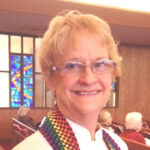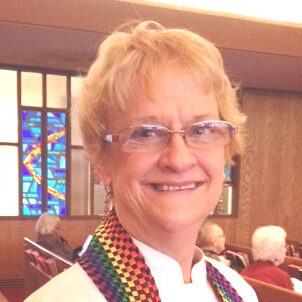Major Donors and How to Reach Them
Written for Giving: Growing Joyful Stewards in Your Congregation, Vol. 22, No. 1, By the Ecumenical Stewardship Center
The roots of generosity are in habits of the heart, not in one’s bank balance, says Herb Miller,1 recognized authority in church effectiveness. His assertion is as true related to major gift donors as it is of those who give smaller amounts to our church ministries. Financial capability does not equal willingness to give. For most people, as we become more engaged with a ministry, our giving grows from periodic gifts to annual pledges or recurring donations, on to major gifts, and ultimately to planned giving.
Encouraging giving is about strengthening relationships, helping each donor connect with our mission in a unique way. So the more we know about what motivates particular potential givers, the more we can relate to them and ask them to give in a way that is both satisfying and meaningful.
What Is a Major Gift?
In most organizations, major gifts are among the largest-size donations a ministry receives. On average, they constitute 88% of a nonprofit organization’s income and are given by 12% of its givers.2 But the focus for cultivating major giving is in terms of relationships more than amount of money. One source says a more accurate definition of a major gift is “one that represents a meaningful and personal commitment from a donor who is in relationship with both our mission and with us.”3 Before identifying major gift prospects and setting up a Gift Range Chart, our fundraising team needs to determine what qualifies as a major gift for our distinctive congregation and situation.
Identifying Major Donors
In most churches, one out of every forty families has the ability to make a one-time gift equivalent to the congregation’s entire annual budget.4 We might think we could identify these families, but appearances can be deceptive, and accumulated assets are much more important than current cash flow. Again, giving has more to do with a generous heart for the cause than wealth markers or financial capability.
Researchers have found three most reliable philanthropic indicators. A donor is highly likely to make a major gift to our ministry in the future if he or she:
- Has given in the past,
- Has been involved recently and frequently in our ministry, and
- Has donated large sums over time.5
In the fundraising classic, Seven Faces of Philanthropy: A New Approach to Cultivating Major Donors,6 the authors identify seven groups of potential major gift donors according to their primary motivations for giving. Based on multiple years of research, they have identified:
- Communitarians – Doing good makes sense. They give to improve the quality of life in their community and to strengthen their business networks. We can acknowledge their leadership in the community and show how our ministries help lead the community as well.
- Devouts – Doing good is God’s will. They give out of their sense of God’s leading or the moral teachings of their religion. They value God, duty, service, values, and vision.
- Investors – Doing good is good for business. They see giving as an exchange, give to prepare for their family’s future security, and act on what they believe in. They want to see our church’s good financial management, impact, and efficiency.
- Socialites – Doing good is fun. They give to make a better world and enjoy the process. We can invite them to fund raising events that combine social interactions with community service.
- Repayers – Doing good in return, often to medical or educational causes. They have been recipients of our ministries and want to help others in a similar situation. We can encourage their personal relationship with our staff and organizational mission.
- Altruists – Doing good feels right. They give out of generosity and empathy for people in urgent circumstances, particularly helping the elderly or those living in impoverished
- Dynasts – Doing good is a family tradition. They have grown up believing that giving is important. They see philanthropy as everyone’s responsibility and gain a sense of self-identity when they support nonprofit organizations.
Individuals in each of the above groups act on their experience and will relate to our ministry’s mission in their distinctive way.
Across all groups, however, most people are no longer content just to write a check or send off an arm’s-length donation. They give with a sense of personal investment. It is important to find ways for them to experience our ministry at work, participate in its efforts, and see its impact in the wider community. When we establish tangible outcomes before meeting with potential donors, they will be able to see how their gifts are bringing about real, positive change.
Our relationship with a major donor should be ongoing. In addition to acknowledging their gift, as we do for all donors, we can find creative ways to recognize them, make check-in calls, and say Thank You to them periodically throughout the year. Our goal is to encourage a sustainable relationship between them and us, our church, and its mission.
See also: Extravagant Generosity: The Heart of Giving
1 – Herb Miller, Full Disclosure: Everything the Bible Says About Financial Giving (Nashville: Discipleship Resources, 2003).
2 – www.donorsearch.net.
3 – www.missionadvancement.com.
4 – Michael Reeves, Extraordinary Money! Understanding the Church Capital Campaign ((Nashville: Discipleship Resources, 2002), p. 57.
5 – www.donorsearch.net/major-gifts-guide.
6 – Russ Alan Prince and Karen Maru File, Seven Faces of Philanthropy: A New Approach to Cultivating Major Donors (San Francisco: Jossey-Bass, 1994).


